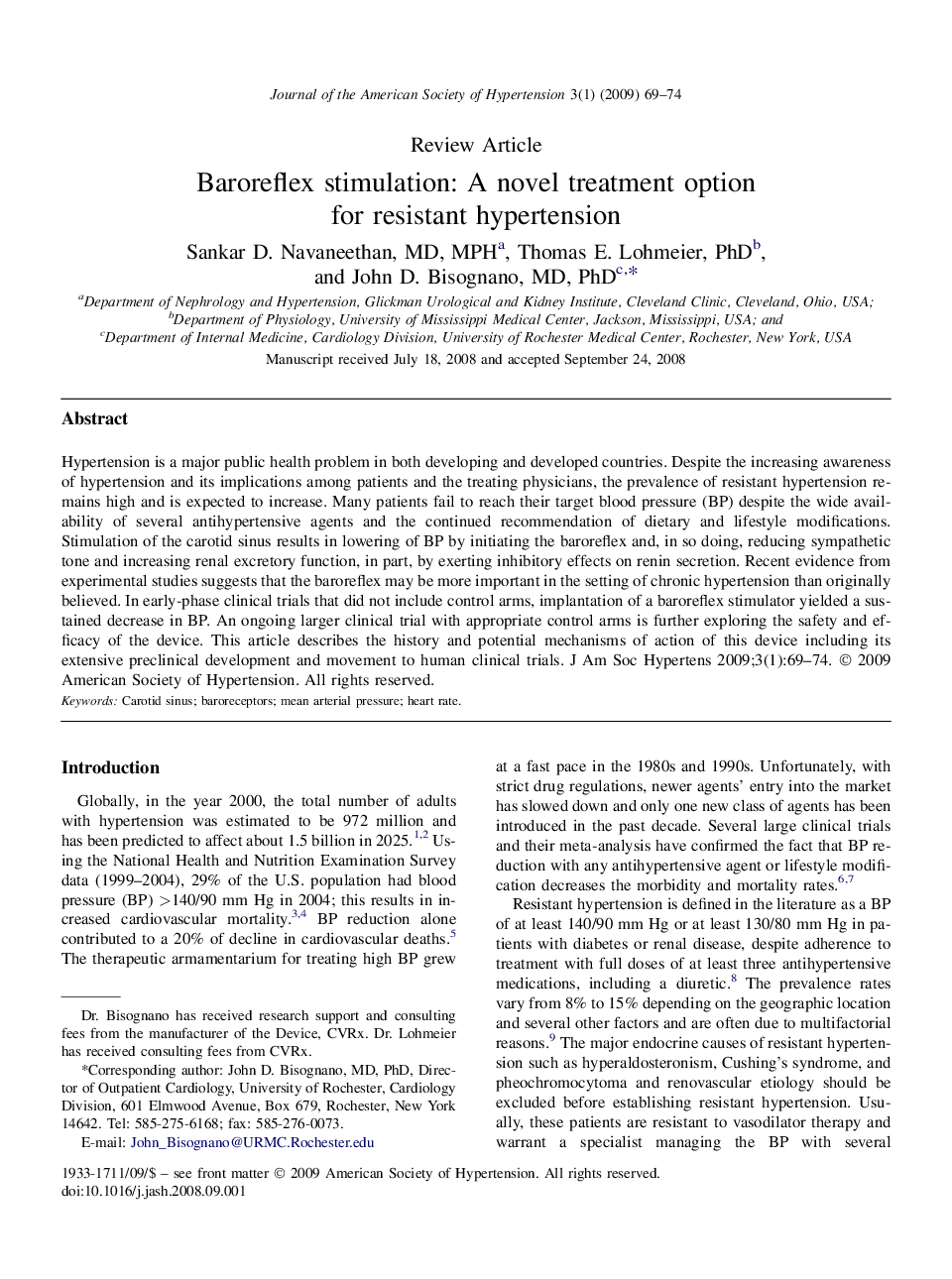| Article ID | Journal | Published Year | Pages | File Type |
|---|---|---|---|---|
| 2957175 | Journal of the American Society of Hypertension | 2009 | 6 Pages |
Abstract
Hypertension is a major public health problem in both developing and developed countries. Despite the increasing awareness of hypertension and its implications among patients and the treating physicians, the prevalence of resistant hypertension remains high and is expected to increase. Many patients fail to reach their target blood pressure (BP) despite the wide availability of several antihypertensive agents and the continued recommendation of dietary and lifestyle modifications. Stimulation of the carotid sinus results in lowering of BP by initiating the baroreflex and, in so doing, reducing sympathetic tone and increasing renal excretory function, in part, by exerting inhibitory effects on renin secretion. Recent evidence from experimental studies suggests that the baroreflex may be more important in the setting of chronic hypertension than originally believed. In early-phase clinical trials that did not include control arms, implantation of a baroreflex stimulator yielded a sustained decrease in BP. An ongoing larger clinical trial with appropriate control arms is further exploring the safety and efficacy of the device. This article describes the history and potential mechanisms of action of this device including its extensive preclinical development and movement to human clinical trials.
Related Topics
Life Sciences
Neuroscience
Endocrine and Autonomic Systems
Authors
Sankar D. MD, MPH, Thomas E. PhD, John D. MD, PhD,
